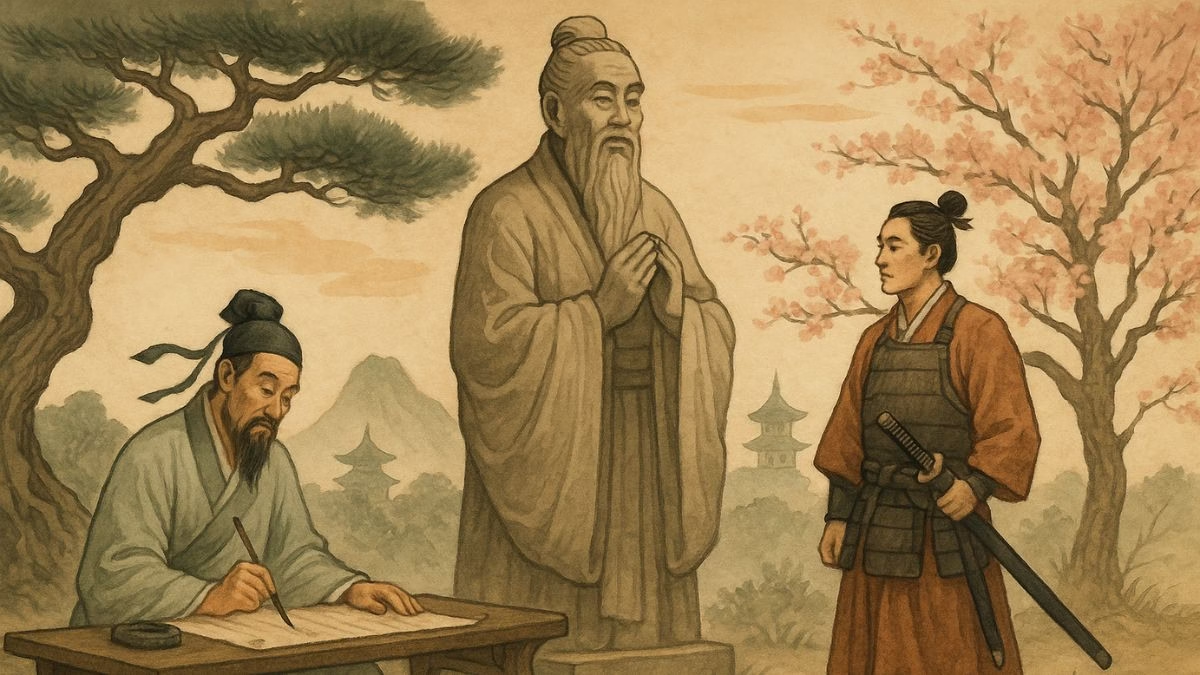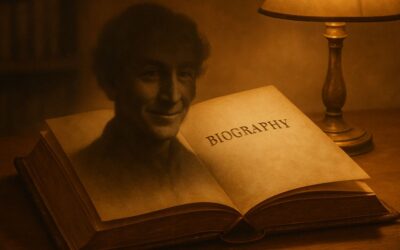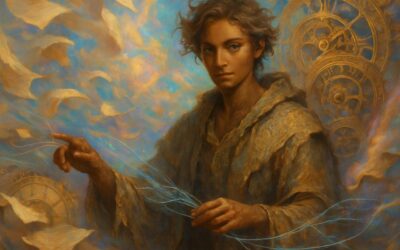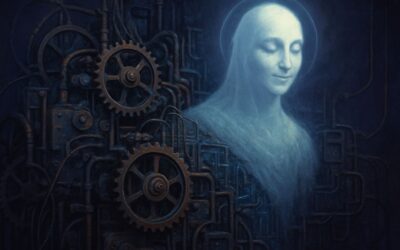In our journeys so far, we’ve seen literature serve many purposes. For Gilgamesh, it was a desperate cry against mortality. For the Greeks, it was a stage to wrestle with fate and the flaws of heroes. In India, it became a vast, sacred map for the soul’s journey through the cosmos. The stories were epic, the stakes were divine, and the heroes were larger than life.
But what if literature had a different job? A more practical one? What if your ability to write a flawless poem, with the right rhyme scheme and the perfect classical allusion, could land you a promotion and a powerful government post? What if the goal of philosophy wasn’t to unlock the secrets of the universe, but to create a perfectly harmonious and well-ordered society right here on Earth? And what if the most intimate, psychologically complex story of an era—what many call the world’s first novel—was written not by a warrior or a sage, but by a woman hidden from public view, observing the subtle intrigues of a royal court from behind a paper screen?
To find this world, we must travel further east, to the ancient civilizations of China, and its cultural inheritors in Japan and Korea. Here, we enter a world where the ink-stained brush was often mightier than the sword, and where poetry, philosophy, and power were woven together into a single, intricate brocade. Welcome to a land where good writing wasn’t just an art form; it was the key to running an empire.
The Master Who Just Wanted a Job
Our story begins in China, around the 6th century BCE, with a man who would become arguably the most influential single philosopher in human history. But he never wrote a book. He never led an army. He never ruled a kingdom. In fact, by his own standards, he was a bit of a failure. His name was Kong Fuzi, or Master Kong, known to the West as Confucius.Confucius lived during a chaotic and violent time known as the “Spring and Autumn Period.” The old Zhou Dynasty had crumbled, and China had shattered into a collection of warring states. Princes and dukes vied for power, alliances were made and broken, and the common people suffered endlessly. Confucius was a political advisor, a would-be reformer who wandered from state to state, trying to convince one ruler or another to adopt his ideas and restore order. He was mostly unsuccessful.
His big idea was not revolutionary; in fact, it was the opposite. He was a restorationist. He believed the solution to the chaos of the present was to look back to the past, to the supposed “Golden Age” of the early Zhou Dynasty, a time of peace, stability, and proper conduct. His entire philosophy was a blueprint for how to get back there.
We know his ideas from a book called The Analects, which is not a grand philosophical treatise but a collection of sayings, brief conversations, and anecdotes jotted down by his disciples years after his death. Reading The Analects is like sitting in on his classes. You get a sense of the man himself: wise, principled, sometimes cranky, and utterly dedicated to his mission of building a better world by building better people.
Building a Better Human
So how do you fix a broken society? Confucius’s answer was: you start with the individual and work your way out. You don’t need a divine revelation or a cosmic theory. You just need to master the art of being a good human being, and the key was found in relationships.
He taught several core concepts. The first and most important is Ren, often translated as “humaneness,” “benevolence,” or “goodness.” The Chinese character for Ren (仁) is composed of two parts: the symbol for a person (人) and the symbol for the number two (二). This is a clue. Ren is not a quality you have in isolation. It only exists in your interactions with others. It’s about empathy, reciprocity, and always considering your effect on the people around you.
But how do you practice Ren? That’s where the second concept, Li, comes in. Li (禮) means ritual, propriety, and the entire code of social etiquette. For Confucius, these weren’t just stuffy, old-fashioned rules. Li was the practical grammar of a harmonious society. It covered everything from how to greet your elders, to the proper music to play at a banquet, to the correct way to mourn a parent. These rituals weren’t empty gestures; they were a form of moral calisthenics. By constantly practicing these respectful and ordered behaviors, you trained yourself to be a better, more humane person. Li was the external structure that cultivated your internal Ren.
The goal of all this self-cultivation was to become a Junzi (君子), a “gentleman” or “superior person.” In the old aristocratic world, you were a “gentleman” if you were born one. Confucius’s idea was radical: a Junzi was not born, but made. Anyone, from a prince to a peasant, could become a superior person through education, discipline, and the constant practice of Ren and Li. Moral worth, not noble birth, was what truly mattered.
And where was the training ground for all of this? The family. The concept of Filial Piety, or Xiao (孝), was the bedrock of his entire system. The respect, loyalty, and duty a child owed to their parents was the first and most important relationship. The family was a microcosm of the state. If you learned how to be a good son, a good brother, and a good husband, you would naturally know how to be a good citizen and a good official. A well-ordered family leads to a well-ordered state.
Though he never found a ruler to fully implement his system, his ideas, passed down through generations of disciples, eventually became the official ideology of the Chinese state for over two thousand years. Confucianism became the cultural DNA of China, and its influence spread powerfully to Korea, Japan, and Vietnam. It created a world where your primary duty was to your family and society, and where education and moral self-improvement were the highest possible callings.
When Bureaucrats Became Rock Stars
Fast forward several centuries to the Tang Dynasty, which ruled China from the 7th to the 10th century CE. This was a golden age of Chinese civilization. It was a time of unprecedented peace, prosperity, and cultural openness. Its capital, Chang’an, was the biggest, most cosmopolitan city on the planet, a bustling hub on the Silk Road filled with merchants, monks, and emissaries from all over Asia.And in this sophisticated empire, Confucius’s ideal of the scholar-official reached its ultimate expression. How did one become a powerful government administrator in the Tang Dynasty? You had to pass the Imperial Examination System. These were a series of grueling, multi-day exams that tested your knowledge of Confucian classics, history, and law. But crucially, a major component of the exams was poetry. To prove you had the refinement, intelligence, and moral character to govern, you had to be able to compose elegant, technically perfect poems on the spot.
Think about that for a second. It’s as if to become a senator or a cabinet secretary today, you had to pass a test in writing flawless sonnets. This system created a unique class of people: the scholar-officials. These were the poets who ran the country. Poetry wasn’t a marginal, bohemian activity. It was a central pillar of elite life. They wrote poems to celebrate a friend’s promotion, to lament a demotion to a remote outpost, at boisterous banquets, or in quiet moments of reflection. Poetry was their social media, their private journal, and their highest art form, all rolled into one. And this era produced the two poets who are to Chinese literature what Shakespeare is to English.
The Immortal and the Sage: Li Bai and Du Fu
Meet Li Bai and Du Fu. They were friends, they admired each other’s work, and they have been seen for centuries as the two great, complementary poles of Chinese poetry.
Li Bai (also known as Li Po) was the wild one, “the Banished Immortal.” He was a romantic, a Taoist, a lover of wine and the moon, and a force of nature who seemed to flout every convention. Legends about him abound, the most famous being that he died, drunk in a boat, when he tried to lean over and embrace the reflection of the moon in the water. His poetry is like him: bold, imaginative, and seemingly effortless. It soars with fantastical imagery, conversations with mountains, and a deep feeling of connection to the cosmos. Yet he could also capture a simple, universal human emotion in just a few words. His most famous poem, “Quiet Night Thought,” is learned by every Chinese schoolchild and has been memorized by a billion people:
Before my bed, the bright moonlight shines,
I mistake it for frost upon the ground.
I lift my head and gaze at the bright moon,
I lower my head and think of my old home.
In just twenty words, he captures the feeling of homesickness with a power that transcends time and culture.
Du Fu, on the other hand, was “the Poet-Sage.” If Li Bai was a soaring immortal, Du Fu had his feet planted firmly on the tragic earth. His life was upended by the catastrophic An Lushan Rebellion, a bloody civil war that shattered the Tang Dynasty and killed millions. Du Fu became a refugee, a wanderer who witnessed the collapse of his world firsthand.
His poetry is a testament to that suffering. He is a master of realism, his verses filled with meticulous detail and a profound compassion for the human cost of war and political chaos. He is a social historian, a journalist in verse. Where Li Bai wrote about drinking with the moon, Du Fu wrote about meeting a recruiting officer in the middle of the night who was carting off the last able-bodied men from a village, leaving only wailing women behind. His famous poem “Spring View,” written while he was a captive in the ruined capital, captures the feeling of national tragedy with devastating restraint:
The state is shattered, but mountains and rivers remain.
In the city, spring comes, and the grass and trees grow thick.
Moved by the times, the flowers shed tears.
Hating this separation, the birds startle the heart.
Li Bai and Du Fu represent two sides of the human spirit: the romantic desire to escape the world, and the moral duty to bear witness to it. Together, their work defines the pinnacle of Chinese poetry, an art form that could contain epic history and intimate feeling within the space of a few perfectly chosen characters.
Across the Sea: A New Refinement
As Chinese culture blossomed, its influence radiated across East Asia. The surrounding kingdoms, especially in Korea and Japan, looked to China as the great model of civilization. They imported its writing system, Buddhist religion, Confucian philosophy, and its literary traditions. But they were not mere copycats. They skillfully adapted these influences, blending them with their own native sensibilities to create unique and brilliant cultures of their own.
Nowhere is this more evident than in Japan during its Heian Period, which lasted from the late 8th to the late 12th century. This was an era of extraordinary peace and aesthetic refinement. The emperor and his aristocratic court lived in a kind of refined bubble in the capital city, Heian-kyō (modern-day Kyoto). Life was a sequence of elaborate rituals, poetry contests, and complicated love affairs. It was an intensely inward-looking world, obsessed with beauty, elegance, and emotional nuance.
And in this rarified atmosphere, a literary revolution occurred. It was led not by scholar-officials or warrior-poets, but by a group of highly intelligent, keenly observant court ladies. While men were expected to write “serious” works—history, government documents, and poetry—in classical Chinese, women of the court were among the first to pioneer writing in the new, phonetic Japanese script known as kana. Freed from the formal constraints of Chinese, they began to write diaries, poems, and stories about the world they knew best: the hidden, emotional world of court life. And one of these women, a lady-in-waiting named Murasaki Shikibu, used this new freedom to create what is now widely regarded as the world’s first novel.
The Shining Prince and His Troubles
Written around the year 1000 CE, Murasaki’s masterpiece is called The Tale of Genji. It is a colossal work, over a thousand pages long, with more than four hundred characters, spanning three generations. It is a work of immense psychological depth and narrative complexity that predates novels like Don Quixote by 600 years.The book’s hero is Hikaru Genji, the “Shining Prince.” The son of an emperor, he is the embodiment of the Heian ideal: impossibly handsome, a gifted poet, a sublime dancer, a master of calligraphy, and an exquisitely sensitive lover. The first two-thirds of the novel follow his life and, most famously, his many, many complicated love affairs. He pursues a dazzling array of women, from high-born princesses to provincial ladies, and his romantic entanglements are described with incredible subtlety and emotional insight.Genji is a romantic hero, but he is far from perfect. He is often driven by his impulses, and his actions, while born of a deep appreciation for beauty, often cause immense pain and suffering to the women he loves and leaves. He is a complex, deeply human character, not a mythic archetype. We see his triumphs, his political exile, his moments of grief, and his eventual decline into old age.
More Than Just a Soap Opera
On the surface, The Tale of Genji might sound like a long and elaborate courtly soap opera. But it is so much more. It is a “novel” in the truest sense of the word because of its revolutionary focus on the inner lives of its characters. Murasaki is less interested in grand events than she is in the subtle, unspoken currents of human feeling. We read a character’s poem and then we read their private thoughts on what they really meant. We see the jealousy, the quiet sorrow, the hidden anxieties that lie beneath the polished, elegant surface of court life. This is a story about psychology.
The novel is also a profound meditation on the passage of time. Unlike an epic, which often exists in a timeless, mythic past, Genji is firmly rooted in the reality of human life. Characters are born, they grow up, they make mistakes, they age, they lose their beauty, and they die. After Genji himself passes away, the novel continues, focusing on the next generation, who live in his shadow, their lives tinged with a sense of nostalgia for a more glorious past.
This feeling saturates the entire book and is the key to its unique beauty. It’s an aesthetic concept the Japanese call mono no aware. It’s a difficult phrase to translate directly, but it means something like “the pathos of things,” “a gentle sadness,” or a profound sensitivity to the beautiful, transient nature of the world. A perfect cherry blossom is so heartbreakingly beautiful precisely because you know that in a few days, its petals will scatter on the wind. A passionate love affair is made more poignant by the knowledge that it cannot last. The entire Tale of Genji is an elegy for the fleeting beauty of life. It finds a deep and gentle melancholy in the fact that everything—youth, love, life itself—is impermanent.
Written by a woman with a keen eye and a sensitive heart, observing her world from behind a screen, The Tale of Genji is a monumental achievement. It proved that prose fiction could be a vehicle for the deepest and most subtle explorations of the human heart, creating a literary model that would influence Japanese culture for a thousand years.
From the rigid social blueprint of Confucius, to the wine-fueled poetry of the Tang masters, to the melancholy, psychological world of Murasaki Shikibu, the literature of East Asia shows us a world where the act of writing was inextricably linked to the act of living a good life and building a good society. The brush was a tool for self-cultivation, social communication, and governing an empire.
Next time, our journey takes a sharp turn west. We will travel to the vibrant, multicultural world of the Islamic Golden Age. It’s a world of scientific discovery, spiritual ecstasy, and dazzling narrative invention. We’ll explore the literary power of the Quran, hear tales of the epic kings of Persia, swoon to the mystical poetry of Rumi, and lose ourselves in the endlessly entertaining, world-traveling stories of One Thousand and One Nights. Join me as we enter “The Courtyard of a Thousand Tales.”
List of Episodes in the Series
The Story of Literature EP1 | The First Scribes: Tales from the Fertile Crescent
The Story of Literature EP2 | Echoes of Olympus: The Greek and Roman Foundations
The Story of Literature EP3 | The Ocean of Stories: Epics and Wisdom of South Asia
The Story of Literature EP4 | The Brush and the Sword: Poetry and Philosophy in East Asia
The Story of Literature EP6 | Forging a Continent: From Beowulf to the Enlightenment
The Story of Literature EP7 | The Soul of the Steppe: The Great Russian Psychological Novel
The Story of Literature EP8 | Magic and Memory: The Boom of Latin American Literature
The Story of Literature EP9 | The Griot’s Legacy: Oral Traditions and Post-Colonial Voices of Africa
The Story of Literature EP10 | The Global Bookshelf: Migration, Identity, and the 21st-Century Story










0 Comments